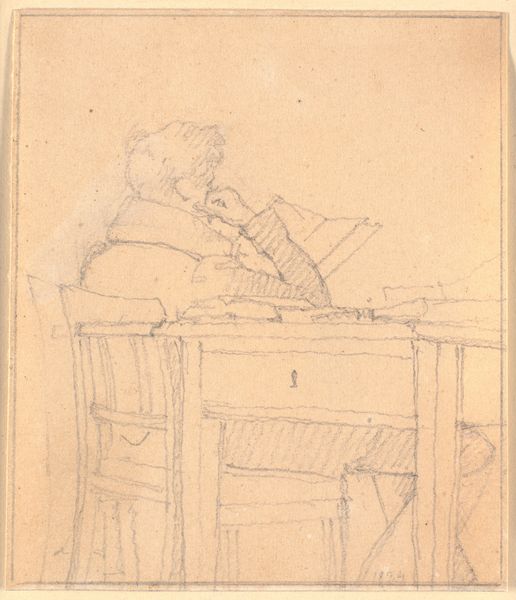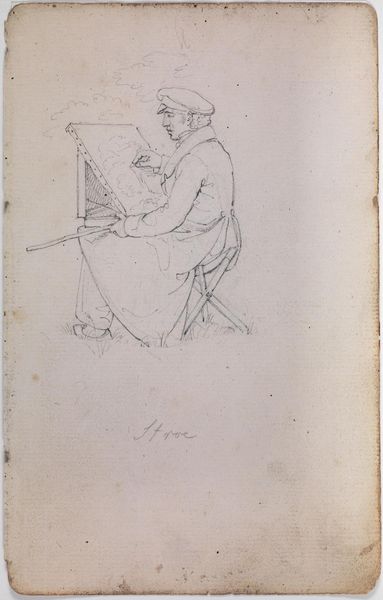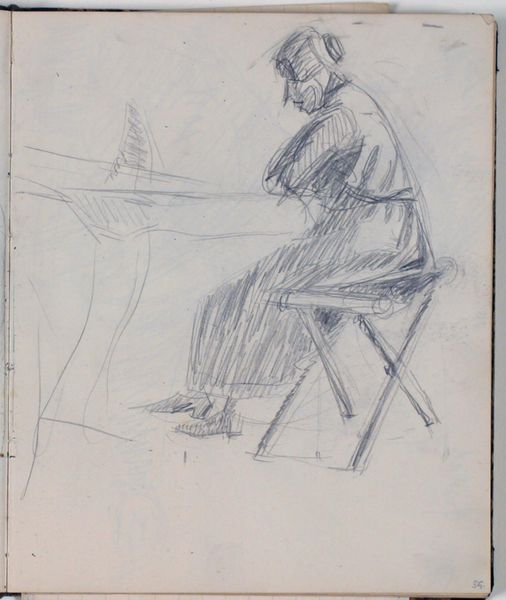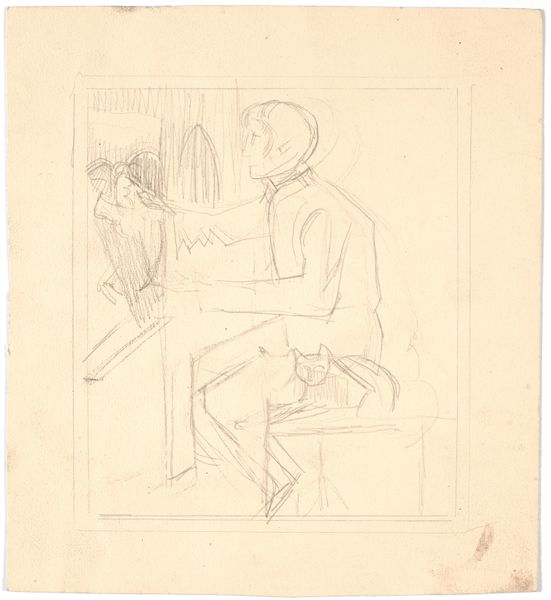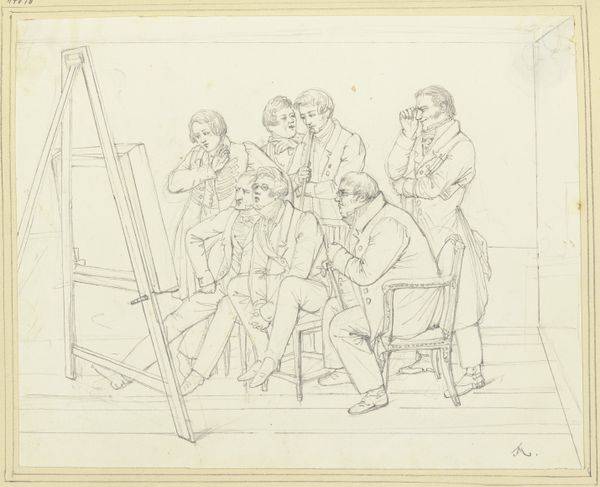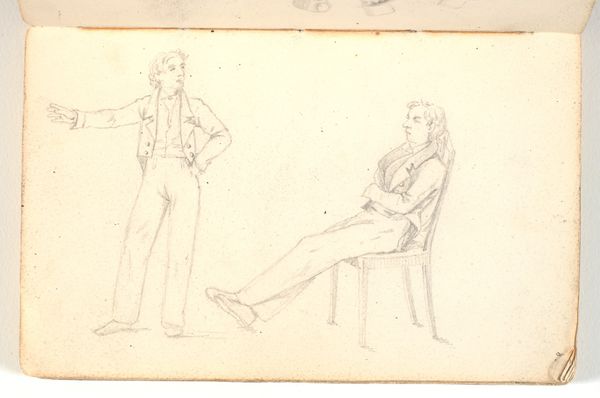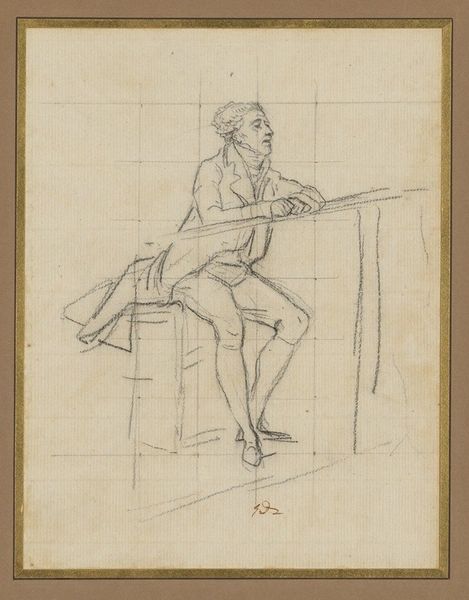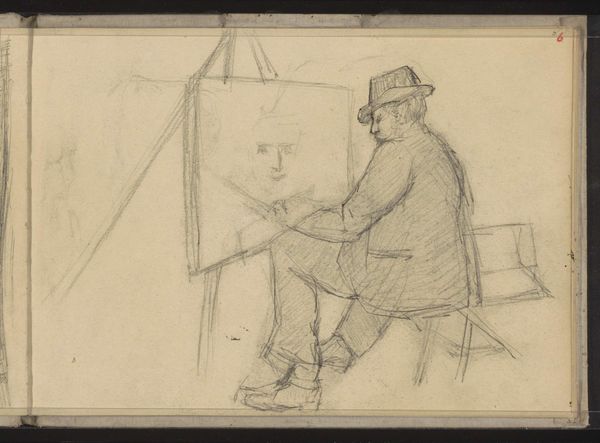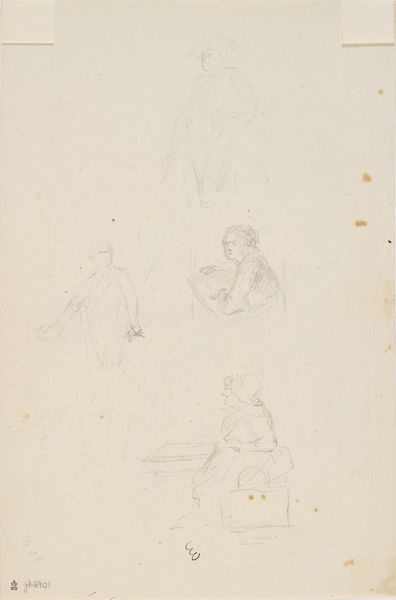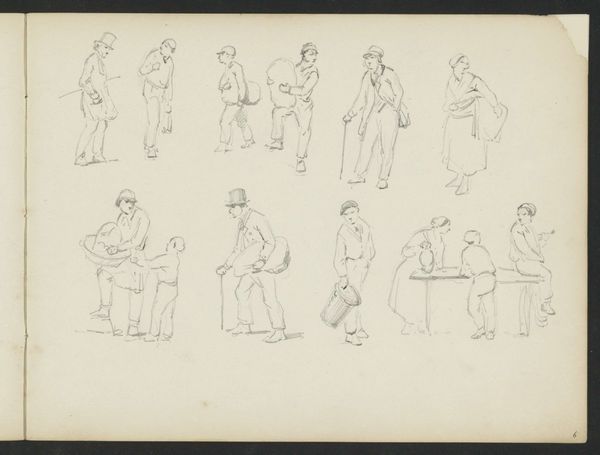
Kunstner ved staffeli, samt rids af figurer i baggrunden 1825 - 1826
0:00
0:00
drawing, pencil
#
portrait
#
drawing
#
figuration
#
romanticism
#
pencil
#
genre-painting
Dimensions: 182 mm (height) x 115 mm (width) (bladmaal)
Editor: So, here we have "Artist at the Easel, with Sketches of Figures in the Background," a pencil drawing from around 1825-1826 by Martinus Rørbye. It's a simple composition, very delicate lines. I’m struck by the almost dreamlike quality, the way the background figures seem to fade in and out. What do you see in this piece, from your perspective? Curator: I see a portrait, of course, but more significantly, it’s a study of artistic creation itself. Notice how Rørbye uses the very act of drawing—the artist at work, the visible strokes—to meditate on the origins of images. He's not just showing *an* artist, he’s evoking *the* artist. This is strongly tied to the Romantic era. Consider the lone figure, a common trope of Romanticism, symbolizing both individual genius and isolation. Does that resonate with you? Editor: Absolutely. I can see that the act of creation becomes a sort of symbol itself, a way to explore inner worlds. The soft pencil lines enhance that feeling of something emerging from the subconscious. Curator: Precisely. And observe the figures in the background – barely there, yet crucial. Are they memories? Ideas? These faded figures hint at a world of inspirations, or perhaps the very ghosts the artist seeks to capture. Editor: That's fascinating; I hadn't really considered the background figures as representing the artist's thoughts. It adds a whole new layer of interpretation to the piece. Curator: It speaks to how we all carry around half-formed images and impressions, constantly striving to give them concrete form, just like Rørbye here. These images can resurface again and again. Editor: Well, this has certainly made me look at Rørbye's drawing with fresh eyes. I am really appreciating how much the artist invites the viewer into his creative thought process here! Curator: Indeed. It shows how a simple drawing can open up a complex world of symbols and ideas and can create something far more enduring and thought provoking than perhaps even Rørbye anticipated!
Comments
No comments
Be the first to comment and join the conversation on the ultimate creative platform.

